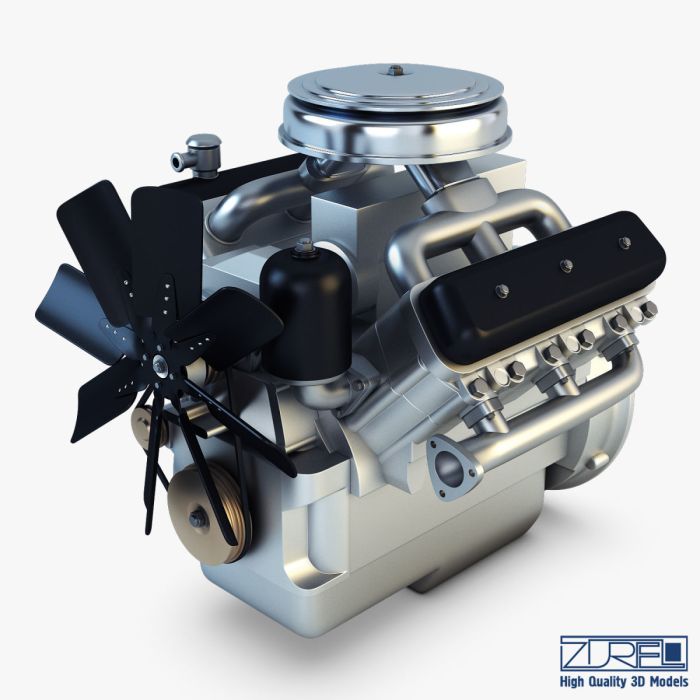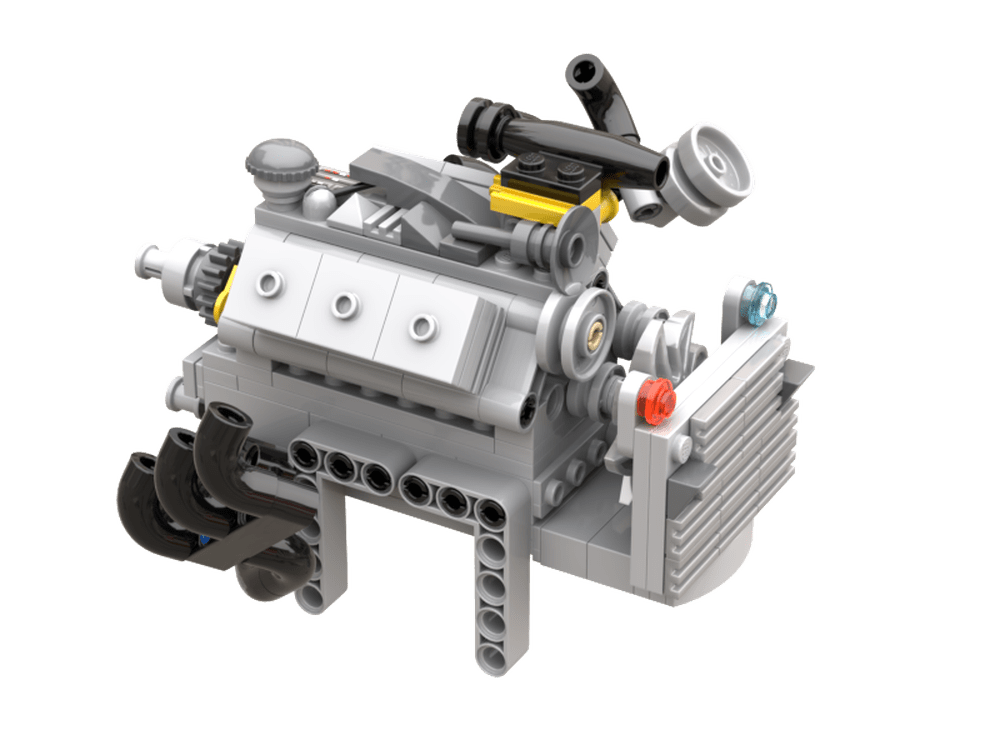V6 engine horsepower chart serves as a crucial reference for automotive enthusiasts and professionals alike, offering a comprehensive look at the power outputs of various V6 engines across leading manufacturers. These engines strike a balance between performance and efficiency, making them a popular choice in a wide range of vehicles from sports cars to SUVs.
Obtain access to Best RWD sports cars 2024 to private resources that are additional.
Understanding the characteristics of V6 engines, their advantages, and their drawbacks is essential for anyone interested in automotive performance. This article delves into the intricacies of horsepower, its measurement, and how it relates to torque in V6 configurations, setting the stage for an in-depth exploration of horsepower ratings across multiple engine models.
You also can investigate more thoroughly about BMW turbocharged engine guide to enhance your awareness in the field of BMW turbocharged engine guide.
Overview of V6 Engines: V6 Engine Horsepower Chart

V6 engines are a popular choice in the automotive world, offering a balanced blend of performance, efficiency, and compact design. These engines typically feature six cylinders arranged in a V configuration, allowing for a smaller size than their V8 counterparts while still delivering substantial power. V6 engines are commonly found in a variety of vehicles, including cars, trucks, and SUVs.
One significant advantage of V6 engines is their ability to produce more power than smaller four-cylinder engines, making them suitable for performance-oriented and heavy-duty applications. However, they can be less efficient than four-cylinder engines in terms of fuel consumption and may not provide the same level of power as V8 engines. When comparing V6 engines to other types, such as V4 and V8 engines, the V6 configuration strikes a balance between size, power, and efficiency, making it a versatile option for many automotive manufacturers.
Understanding Horsepower, V6 engine horsepower chart
Horsepower is a vital metric in assessing automotive performance, representing the engine’s ability to perform work over time. It is an essential factor that consumers consider when evaluating a vehicle’s capabilities, influencing everything from acceleration to towing capacity. Horsepower ratings can vary significantly across different engine types and configurations.
Horsepower is measured using a dynamometer, which assesses the engine’s output under specific conditions. The measurement considers factors like engine speed and torque, providing a comprehensive view of the engine’s performance. In V6 engines, the relationship between horsepower and torque is particularly important, as torque contributes to acceleration while horsepower determines the vehicle’s top speed and overall performance.
V6 Engine Horsepower Chart
The following table displays horsepower ratings for various V6 engines across different manufacturers. This chart highlights the trends in horsepower output over the years, showcasing advancements in technology and design.
| Engine Model | Year | Horsepower | Additional Specifications |
|---|---|---|---|
| Ford 3.5L EcoBoost | 2020 | 400 hp | Twin-turbocharged, 24 valves |
| Chevrolet 3.6L LFX | 2021 | 310 hp | Direct injection, VVT |
| Honda 3.5L J35Y2 | 2022 | 280 hp | SOHC, i-VTEC |
| Nissan 3.5L VQ35DE | 2023 | 300 hp | DOHC, variable intake |
Factors Affecting Horsepower in V6 Engines

Several key factors influence the horsepower output in V6 engines. Understanding these factors is essential for both manufacturers and enthusiasts looking to optimize performance.
– Displacement: Larger engine displacement generally leads to higher horsepower due to the increased volume of air-fuel mixture that can be combusted.
– Forced Induction: Turbocharging or supercharging significantly boosts horsepower by increasing the amount of air entering the engine, enhancing combustion efficiency.
– Engine Tuning: Proper tuning can maximize horsepower by optimizing fuel delivery and ignition timing, while modifications such as exhaust upgrades can further enhance performance.
– Fuel Type: The type of fuel used can directly impact horsepower; high-octane fuels typically allow for more aggressive tuning and increased power output.
Popular V6 Engines and Their Horsepower Ratings

Several noteworthy V6 engines dominate the automotive market, well-known for their impressive horsepower ratings and performance specifications. Here are a few prominent examples:
– Ford 3.5L EcoBoost: Renowned for its turbocharging technology, this engine is a favorite in Ford’s full-size trucks.
– Chevrolet 3.6L LFX: This engine is popular in various GM vehicles, delivering a balance of power and efficiency.
– Nissan 3.5L VQ35DE: A well-regarded engine in the Nissan lineup, known for reliability and performance in both sedans and sports cars.
When comparing the horsepower ratings of V6 engines across different vehicle categories, it becomes clear that sports cars and performance models often feature higher outputs than those found in family-oriented vehicles.
Real-World Applications of V6 Engine Horsepower
Horsepower ratings play a crucial role in determining real-world vehicle performance. Higher horsepower typically correlates with enhanced acceleration and overall driving dynamics. Here are a few examples of vehicles featuring V6 engines:
– Ford F-150: Equipped with the 3.5L EcoBoost, it offers robust towing capabilities and strong off-the-line acceleration.
– Chevrolet Camaro: The 3.6L LFX engine allows for impressive speed and agility, making it a favorite among sports car enthusiasts.
– Toyota Highlander: Utilizing a V6 engine, it combines family-friendly features with adequate power for daily driving.
– Driving Experience Impacts by Horsepower Levels:
– Low horsepower (under 200 hp): Suitable for city driving, may struggle with acceleration.
– Moderate horsepower (200-300 hp): Provides a balance of efficiency and performance for daily use.
– High horsepower (over 300 hp): Excels in acceleration, often found in sports cars and performance vehicles.
Future Trends in V6 Engine Development
Emerging technologies are poised to shape the future of V6 engine development, particularly in terms of horsepower output. Innovations include:
– Hybrid Technology: The integration of hybrid systems can enhance V6 engine performance, allowing for better fuel economy without sacrificing power.
– Advanced Fuel Injection Systems: Direct injection and variable valve timing technologies are expected to further optimize combustion, resulting in increased horsepower.
– Electrification: The shift towards electric and hybrid vehicles is likely to influence the design of V6 engines, enabling them to deliver higher performance metrics in an environmentally friendly way.
As automotive manufacturers continue to innovate, expectations for future horsepower advancements in V6 engines remain high, reflecting the industry’s commitment to performance and efficiency.
Concluding Remarks
In conclusion, the V6 engine horsepower chart not only highlights the diverse performance levels of V6 engines but also underscores the technological advancements that continue to shape the automotive landscape. As we’ve explored the factors influencing horsepower and the real-world applications of these engines, it’s clear that V6 engines will play a pivotal role in the future of automotive innovation.